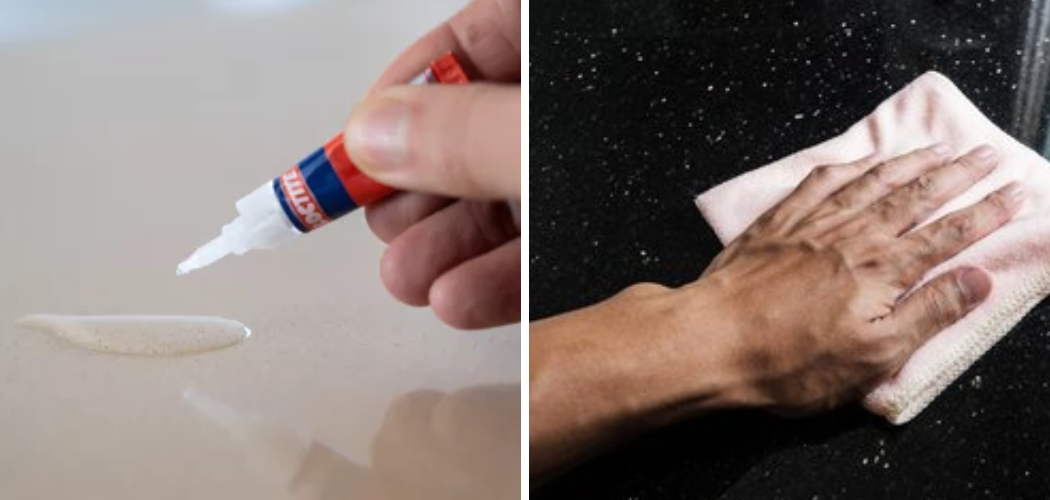Super glue is a strong adhesive that can accidentally spill onto laminate counters during various DIY or repair projects. Its bonding strength makes it challenging to remove without risking damage to the surface. Removing super glue from laminate surfaces requires careful handling and the right techniques to avoid scratching or discoloring the counter.
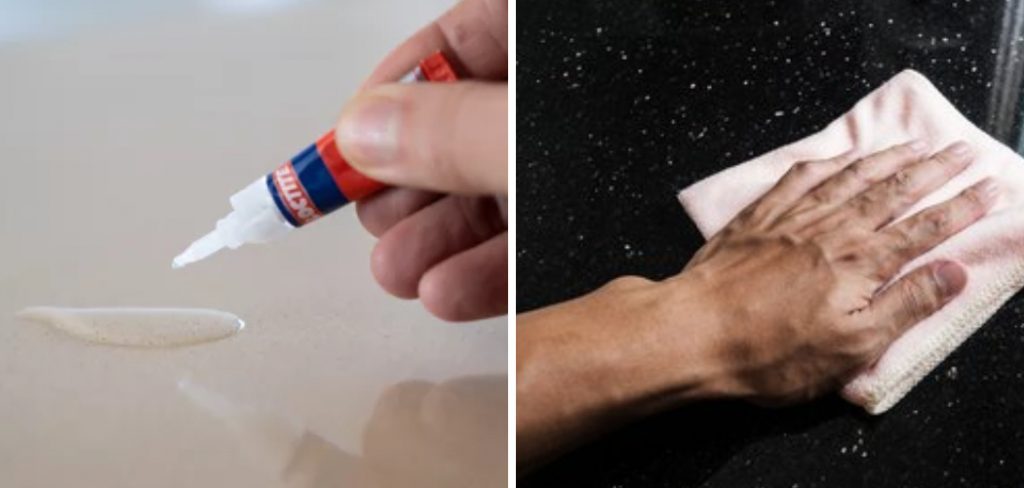
This article provides a comprehensive, step-by-step guide on how to safely and effectively remove super glue from laminate counters. We will offer tips and techniques that ensure the laminate surface remains undamaged and clean. Throughout this guide, you will find detailed instructions and helpful advice on how to remove super glue from laminate counters, making this chore less daunting and more manageable.
Materials and Tools Needed
Materials:
- Acetone or nail polish remover (with acetone)
- Rubbing alcohol
- Mild dish soap
- Warm water
- Baking soda (optional)
- White vinegar (optional)
Tools:
- Cotton balls or pads
- Plastic scraper or credit card
- Soft cloths or paper towels
- Sponge
- Microfiber cloth
- Gloves (to protect hands)
Initial Preparation
Preparing the area and taking necessary safety precautions before starting the removal process ensures a safer and more efficient cleaning process.
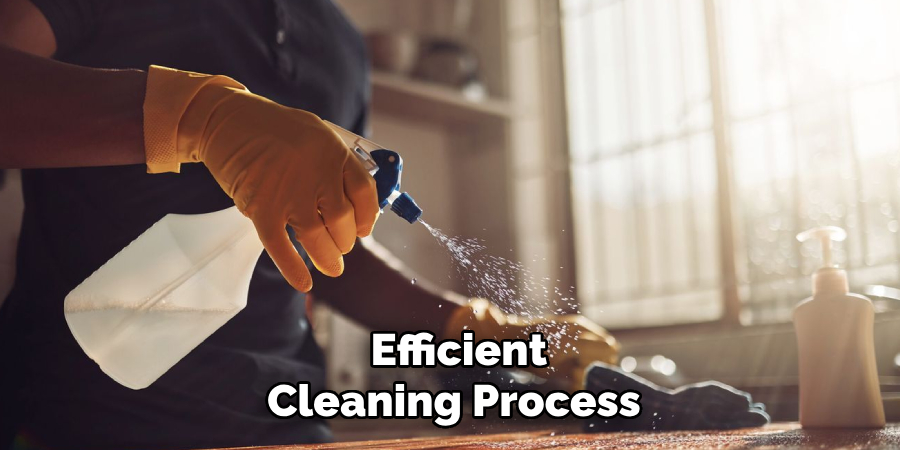
Safety Precautions:
- Ensure good ventilation in the area where you will be working. Open windows or use fans to keep air circulating and reduce the concentration of any fumes.
- Wear gloves to protect your hands from acetone and other chemicals. Prolonged exposure to these substances can cause skin irritation or damage.
Testing:
- Test a small, inconspicuous area of the laminate counter with acetone or nail polish remover to ensure it does not damage or discolor the surface.
- Dip a cotton ball or pad into the acetone or nail polish remover.
- Gently dab the cotton ball or pad onto a hidden section of the laminate counter, such as under an appliance or in a corner.
- Wait a few minutes and then check the area for any signs of damage, discoloration, or adverse reactions.
- If there is no noticeable change, it is safe to proceed with using acetone on the affected area of the counter. If any damage occurs, consider using an alternative method for glue removal, such as rubbing alcohol or a mixture of mild dish soap and warm water.
How to Remove Super Glue from Laminate Counter: Step-by-Step Removal Process
Step 1: Scraping Off Excess Glue
- Using a Plastic Scraper:
- Gently scrape off as much of the dried super glue as possible using a plastic scraper or the edge of a credit card.
- Avoid using metal tools to prevent scratching the laminate surface.
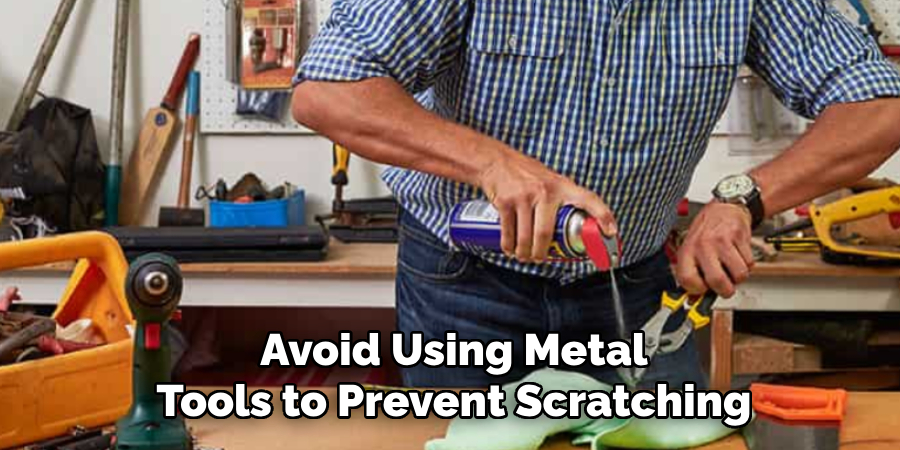
Step 2: Applying Acetone
- Soaking the Glue:
- Moisten a cotton ball or pad with acetone or nail polish remover containing acetone.
- Place the soaked cotton on the glue spot and let it sit for a few minutes to soften the glue.
- Ensure the area is well-ventilated and avoid inhaling fumes.
- Wiping the Glue:
- After a few minutes, gently wipe the softened glue with the cotton pad.
- Repeat the process if necessary until most of the glue is removed.
Step 3: Cleaning Residue
- Using Rubbing Alcohol:
- For any remaining glue residue, moisten a cotton ball or pad with rubbing alcohol.
- Rub the area gently to remove the leftover glue.
Step 4: Cleaning the Surface
- Mild Soap Solution:
- Mix a few drops of mild dish soap with warm water.
- Use a sponge or soft cloth to clean the area thoroughly, removing any acetone or alcohol residue.
- Rinse with a clean, damp cloth and dry the surface with a microfiber cloth.
Step 5: Inspecting the Work
- Checking for Dryness:
- Once the surface is dry, inspect it to ensure all the glue has been removed.
- If any glue spots remain, repeat the necessary steps until the surface is completely clean.
- Final Touch-Up:
- For lamination, consider polishing the area with a recommended laminate polish to restore its shine.
- Follow the product’s instructions carefully to avoid any damage or residue.
Step 6: Prevention Tips
- Using Cutting Mats:
- In future projects, use a cutting mat or other protective surface to prevent glue from touching the laminate.
- Immediate Cleaning:
- Clean up any glue spills immediately before they dry to avoid the need for intensive removal processes.
- Proper Storage of Glue:
- Store super glue properly, ensuring the lid is tightly closed to prevent accidents and spills.
Step 7: Safety Considerations
- Handling Chemicals:
- Always wear gloves to protect your hands from chemicals such as acetone and rubbing alcohol.
- Keep the area well-ventilated to avoid inhaling fumes, and always work in a space with adequate airflow.
- Disposal of Materials:
- Dispose of used cotton balls, pads, and other materials safely according to local regulations. Avoid flushing them down the drain as they may contain chemicals that are harmful to the environment.

Alternative Methods
Method 1: Baking Soda Paste
- Making the Paste:
- Mix baking soda with a small amount of water to form a thick paste.
- Applying the Paste:
- Apply the paste to the glue spot and let it sit for a few minutes.
- Gently scrub with a soft cloth or sponge.
- Cleaning the Area:
- Rinse with warm water and dry with a microfiber cloth.
Method 2: White Vinegar
- Using Vinegar:
- Moisten a cloth with white vinegar and place it on the glue spot.
- Let it sit for a few minutes to soften the glue.
- Gently rub the area with the vinegar-soaked cloth.
- Cleaning the Surface:
- Rinse with warm water and dry with a microfiber cloth.
Final Steps and Maintenance
Inspecting the Area:
- Thorough Check:
- Inspect the laminate surface carefully to ensure all traces of superglue have been successfully removed.
- If any glue spots remain, repeat the required steps until the surface is entirely clean and free of residue.
Preventive Measures:
- Covering the Work Area:
- When using super glue or other strong adhesives, always cover the work area with a protective layer, such as newspaper or plastic sheeting, to prevent future glue spills.
- This simple precaution can save time and effort when cleaning unwanted adhesive spills.
Regular Cleaning:
- Mild Soap Solution:
- Clean the laminate counter regularly with mild soap and water. This practice helps to preserve its appearance and prevent the buildup of substances, including adhesives.
- Use a soft cloth or sponge for gentle yet effective cleaning, ensuring the surface stays in good condition.
Frequently Asked Questions
Q: Can I Use Acetone on All Types of Laminate Surfaces?
A: While acetone is generally safe for many laminate surfaces, it’s crucial to test a small, inconspicuous area first to ensure it doesn’t cause damage or discoloration. Always follow the guidance given in the “Testing” section before application.
Q: What if The Acetone Discolors My Laminate Counter?
A: If any discoloration or damage occurs during the test, refrain from using acetone. Alternative methods, such as rubbing alcohol, baking soda paste, or white vinegar mentioned in the “Alternative Methods” section, may be more suitable.
Q: Can I Use Metal Tools to Scrape Off the Dried Super Glue?
A: No, it is not recommended to use metal tools as they can scratch the laminate surface. Instead, use a plastic scraper or the edge of a credit card to gently remove excess glue.
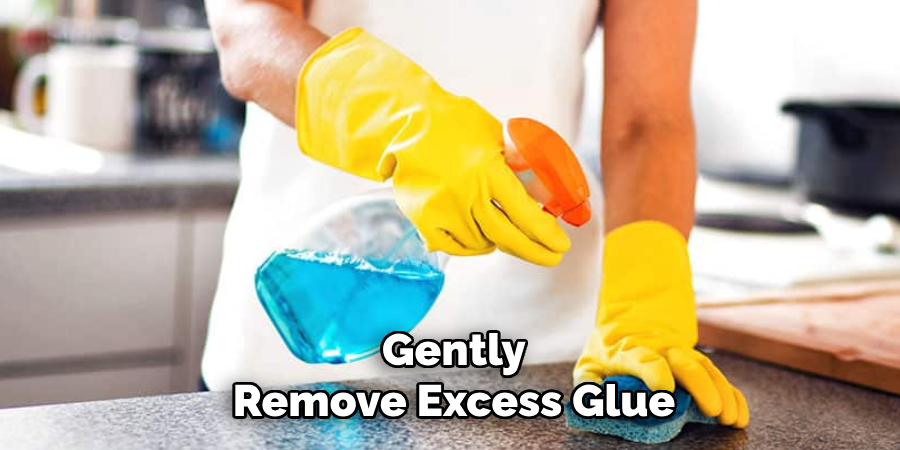
Q: How Often Should I Inspect and Clean My Laminate Counter for Maintenance?
A: Regular inspection and cleaning are advisable to keep your laminate counter in good condition. Clean the surface with a mild soap solution and a soft cloth or sponge to prevent the buildup of substances, including adhesives.
Q: Is There Any Way to Prevent Glue Spills on Laminate Surfaces?
A: Yes, use a protective layer such as a cutting mat, newspaper, or plastic sheeting to cover the work area when handling super glue or other strong adhesives. This simple preventive measure can save significant time and effort in cleaning up spills.
Q: Are There Any Health Risks Associated with Using Acetone and Rubbing Alcohol?
A: When using chemicals like acetone and rubbing alcohol, take precautions to protect your health. Wear gloves to protect your skin, and ensure the area is well-ventilated to avoid inhaling fumes. Dispose of used materials carefully to adhere to safety and environmental regulations.
Conclusion
Removing super glue from laminate counters may seem daunting, but by following the appropriate steps, you can achieve a clean and glue-free surface. The main methods to consider include scraping off excess glue with a plastic scraper or credit card and using acetone or nail polish remover to soften and wipe away the adhesive. For persistent residues, rubbing alcohol can help remove the remaining traces of glue. Additionally, alternative methods like baking soda paste or white vinegar can also be effective in breaking down and eliminating super glue.
It is crucial to approach the removal process with care and attention. Being gentle and allowing time for the chemicals to work ensures that the laminate surface remains undamaged. Testing products on inconspicuous areas first and avoiding harsh, metal tools are important precautions to take.
By carefully following the steps outlined in this guide on how to remove super glue from laminate counter, you can restore your surface without much hassle. Patience and the right techniques are key to making the removal process straightforward. With these tips in hand, you can confidently tackle super glue spills, ensuring your laminate counters stay in pristine condition.
